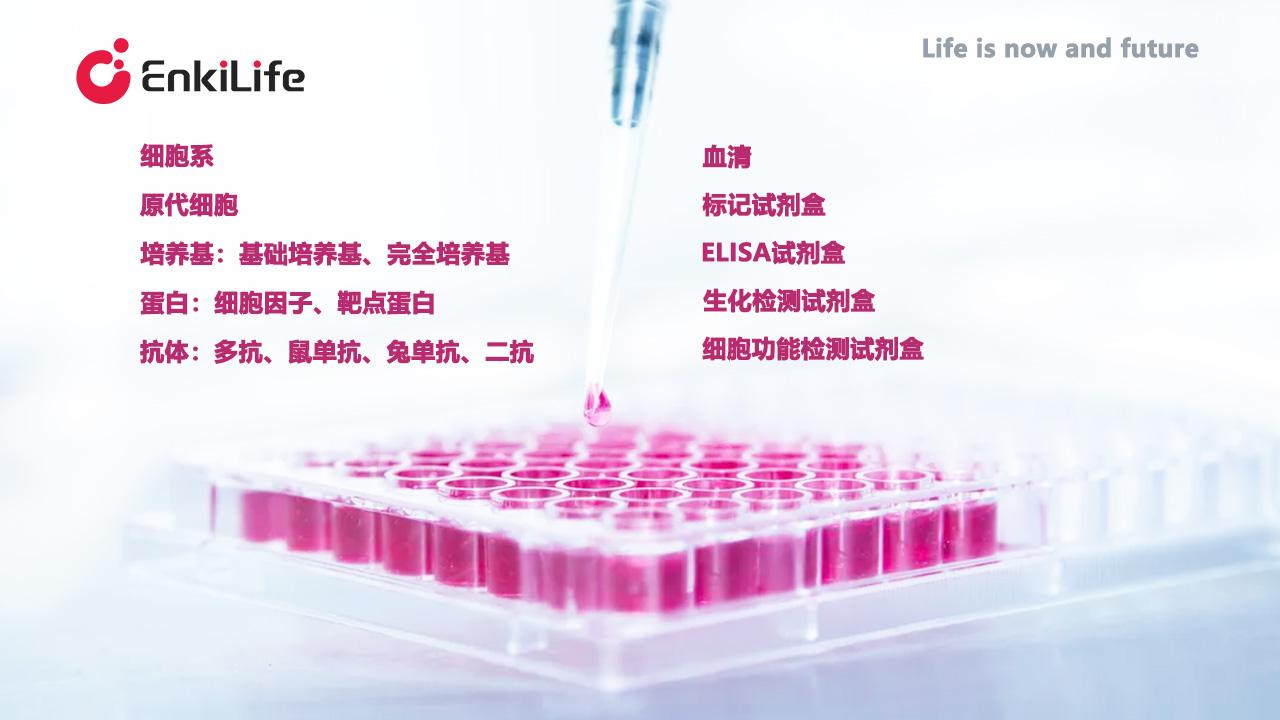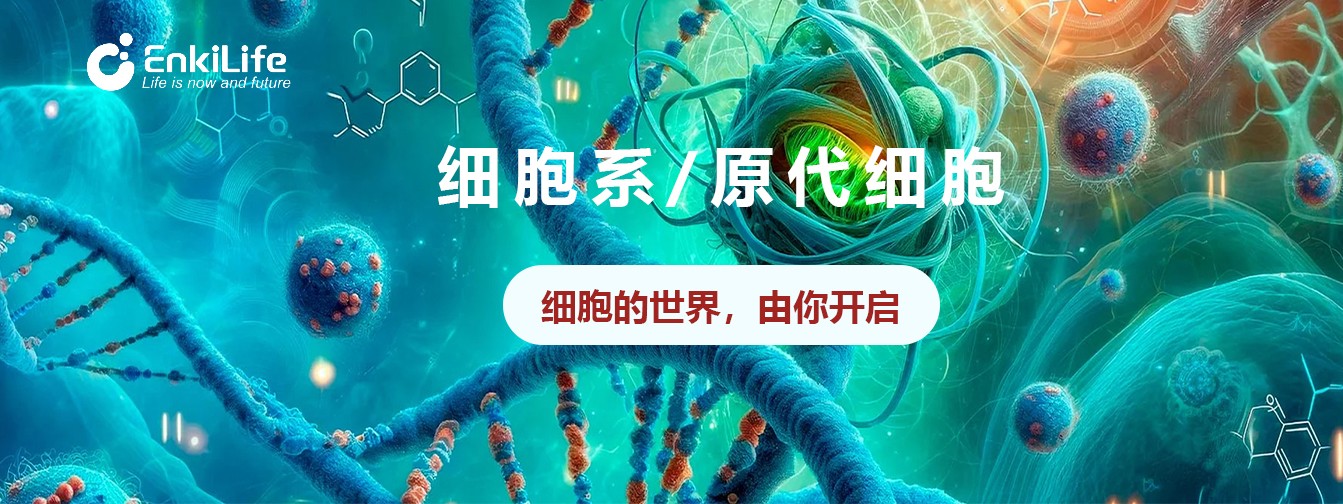p53兔多克隆抗体
发表时间:2025-07-22p53兔多克隆抗体
引言
p53是一种关键的抑癌基因,在DNA修复、细胞周期阻滞和凋亡中发挥核心作用。其功能失调与50%以上人类癌症相关[1]。兔多克隆抗体因高亲和力、广表位识别能力,成为p53研究的重要工具[2][3][4]。
一、p53兔多克隆抗体的基础特性
1. 多表位识别能力
- 可同时识别p53磷酸化(如Ser15、Ser46)、乙酰化等多种修饰状态[5][6],优于单克隆抗体的单一表位局限性。
2. 高亲和力与稳定性
- 兔源抗体具有更广泛的免疫原性识别库,亲和力常达1:500–1:5000稀释度[7][8]。
3. 种属交叉反应性
- 可跨物种识别小鼠、大鼠及人类p53同源蛋白[7][8]。
二、作用机制研究中的应用
1. 调控细胞周期与凋亡
- p53通过激活p21(CDKN1A)阻滞G1/S期转换[9][10],兔多克隆抗体可同时检测p53及其下游靶点(如Bax、PUMA)[7][11]。
- 已证实p53直接转录激活促凋亡基因Bax[11]。
2. 蛋白互作与降解机制
- 免疫共沉淀(Co-IP)研究揭示p53与MDM2的互作:MDM2通过泛素化促进p53降解[12],而磷酸化抗体(如#9285)可监测DNA损伤后p53稳定性变化[3]。
3. 表观遗传调控
- 兔多克隆抗体联合ChIP技术证实p53乙酰化(如PCAF/p300介导)响应DNA损伤[2]。
三、临床应用
1. 癌症诊断与分型
- 免疫组化(IHC)中,p53抗体表达量可区分胃癌亚型:抑郁组患者RAB1A、LOXL2高表达,MTS1低表达,提示预后不良[13]。
- 肝癌中p53与TTK共表达促进Akt活化,抗体检测(如#9282)辅助临床分期[3]。
2. 治疗响应标志物
- 在结肠癌前病变中,p53抗体联合Ki-67检测显示甘草酸可抑制增殖并诱导凋亡[8]。
- 流感病毒感染时,p53/p21通路介导细胞周期阻滞[4]。
3. 靶向治疗开发
- AML治疗中,PTPN2抑制剂通过p53信号增强化疗敏感性,依赖兔多克隆抗体验证p53/p21上调[14]。
四、挑战与未来展望
1. 特异性提升
- 部分抗体存在交叉反应(如p63家族),需开发更特异性试剂[15]。
- 新型抗体如KJC8可区分p53β亚型(28 kDa),推动异构体功能研究[16]。
2. 联合诊疗策略
- 抗体-药物偶联物(ADC)靶向p53突变肿瘤进入临床前研究[17]。
- 食管癌中p53/GSDMC通路调控焦亡[17]。
3. 多组学整合
- 结合单细胞测序与空间蛋白组学,抗体将揭示肿瘤微环境中p53异质性[18]。
结语
p53兔多克隆抗体在基础机制、癌症诊断及靶向治疗中不可或缺。未来需优化特异性、开发伴随诊断试剂盒,并探索其在免疫治疗中的协同作用。

参考文献
1. Decision making by p53: life, death and cancer. Oren M. Cell Death Differ. 2003;10(4):431-446. [PMID: 12719720]
2. Characterization of a rabbit polyclonal antibody against threonine-AMPylation. Hao YH, et al. J Biotechnol. 2011 Feb 10;151(3):251-4. [PMID: 21185336]
3. TTK activates Akt and promotes proliferation and migration of hepatocellular carcinoma cells. Liu X, et al. Oncotarget. 2015;6(33):34309-34320. [PMID: 26416456]
4. Chrysin Ameliorates Influenza Virus Infection in the Upper Airways by Repressing Virus-Induced Cell Cycle Arrest and Mitochondria-Dependent Apoptosis. Liu Y, et al. Front Immunol. 2022 Mar 31;13:872958. [PMID: 35432374]
5. Epigenetic regulation of miR-29a/miR-30c/DNMT3A axis controls SOD2 and mitochondrial oxidative stress in human mesenchymal stem cells. Jung Y, et al. Redox Biol. 2020;36:101639. [PMID: 32738706]
6. TC2N suppresses p53 signaling to promote lung cancer progression. Hao X, et al. Oncogene. 2018;38(8):1361-1375. [PMID: 30206350]
7. The eIF2α Kinases PERK and PKR Activate Glycogen Synthase Kinase 3 to Promote the Proteasomal Degradation of p53. Baltzis D, et al. J Biol Chem. 2007;282(43):31675-31688. [PMID: 17726030]
8. Glycyrrhizic Acid Suppresses the Development of Precancerous Lesions via Regulating Hyperproliferation, Inflammation, Angiogenesis and Apoptosis. Khan R, et al. PLoS One. 2013;8(2):e56002. [PMID: 23409114]
9. WAF1, a potential mediator of p53 tumor suppression. El-Deiry WS, et al. Cell. 1993;75(4):817-822. [PMID: 8252623]
10. The p21 Cdk-interacting protein Cip1 is a potent inhibitor of G1 cyclin-dependent kinases. Harper JW, et al. Cell. 1993;75(4):805-813. [PMID: 8242751]
11. Tumor suppressor p53 is a direct transcriptional activator of the human bax gene. Miyashita T, et al. Cell. 1995;80(2):293-295. [PMID: 7834749]
12. Mdm2 promotes the rapid degradation of p53. Haupt Y, et al. Nature. 1997;387(6630):296-294. [PMID: 9153395]
13. 张素香, 等. 负性情绪对原发性胃癌患者癌基因及幽门螺杆菌感染的影响. 中国肿瘤临床. 2019;46(12):619-6210.
14. Targeting PTPN2 with a novel inhibitor for AML therapy. Kuang W, et al. Nature Cancer. 2024;5:789–804. [PMID: 38730121]
15. Global p53/p63 interactome reveals synergistic drug targets. Huang Y, et al. Nat Commun. 2012;3:906. [PMID: 22713751]
16. p53 isoforms regulate p53 transcriptional activity. Bourdon JC, et al. Genes Dev. 2005;19(18):2122-2132. [PMID: 16131611]
17. HPV18 E6 inhibits pyroptosis via P53/MDH1/ROS/GSDMC pathway in esophageal cancer. Tang D, et al. Cell Death Dis. 2023;14(7):409. [PMID: 37402734]
18. Cargo-selective delivery of nucleic acid therapeutics by bola-amphiphilic dendrimers. Chen J, et al. Sci Adv. 2023;9(20):eadg60610. [PMID: 37163573]




